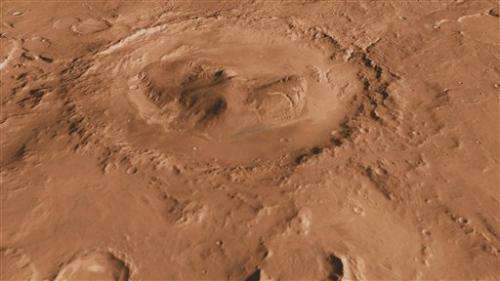New Mars rover to land in intriguing giant crater

The latest Mars destination is a giant crater near the equator with an odd feature: a mountain rising from the crater floor.
How did it get there?
Gale Crater was gouged by a meteor impact more than 3 billion years ago. Over time, scientists believe sediments filled in the 96-mile (155-kilometer)-wide crater and winds sculpted the 3-mile (4.8-kilometer)-high mountain, called Mount Sharp.
Mount Sharp's stack of rock layers can be read like pages in a storybook with older deposits at the base and more recent material the higher up you go, providing a record of Mars history through time.
Images from space reveal signs of water in the lower layers of the mountain, including mineral signatures of clays and sulfate salts, which form in the presence of water. Life as we know it needs more than just water. It also needs nutrients and energy.
During its two-year mission, the NASA rover Curiosity will trek to the lower flanks of the mountain in search of the carbon-based building blocks of life.
Copyright 2012 The Associated Press. All rights reserved. This material may not be published, broadcast, rewritten or redistributed.




















